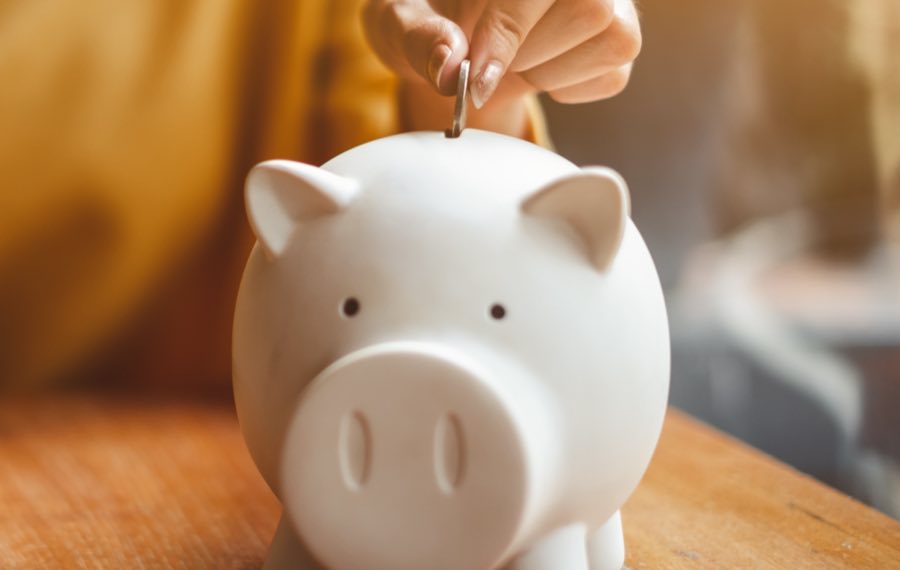How to Save For a House Deposit In 2022

Francis Taylor
Last Updated: 2nd February 2023
How on earth are you supposed to save up for a home? This is a question on the lips of many Australians – especially with the prices on most homes having skyrocketed back in 20211.
Fortunately, there are some time-tested strategies that might help you when it comes to putting a new roof over your head. And in this article, we’ll go through everything in detail.
What do I need to know?
- Other than the purchase price, you should also consider additional costs, like mortgage repayments, stamp duty and conveyancing fees, when buying a home
- According to ASIC’s Moneysmart, aim to save 20 per cent of the purchase price plus enough to cover the additional costs of buying a home
- Check if you’re eligible for government grants and initiatives
- If you’re after a home loan, then comparing different products might be a good idea
1. Work out the costs
Buying a house comes with a whole range of costs: mortgage repayments, stamp duty, conveyancing fees, and – of course – the purchase price of the house itself.
This will typically be the most significant cost, and while some people will be able to afford it up-front, most prospective homeowners will take out a home loan instead.
This helps cover the purchase price on the house; but to secure a loan, the lender will usually require a contribution from you in the form of a deposit.
How much do you need for a home deposit?
There’s no hard and fast rule for this. That being said, ASIC’s Moneysmart notes that 20% of the house’s purchase price – plus enough to cover the additional costs of buying a home – is a great savings goal2.
A deposit of 20% is usually enough to avoid having to pay for Lender’s Mortgage Insurance (LMI) as well. This is a one-off cost that covers the additional risk to the lender. According to Moneysmart, the average LMI fee costs about $6,2002.
What about the other costs?
Unfortunately, your deposit isn’t the only cost you’ll need to fork out for. Buying a house comes with a range of upfront costs, which you’ll only need to pay once, and ongoing costs, which you’ll pay on a regular basis long after you’ve moved in.
The upfront costs make up the bare minimum you’ll need to pay to purchase a new house and move into it. In addition to your home deposit, these may include:

Stamp duty
This tax is charged for certain documents and transactions, usually the transfer of land or assets.
Although the exact cost of stamp duty can vary from state-to-state, you can use one of the calculators below to work out how much you’ll be required to pay:
- Victoria — State Revenue Office: Land transfer (stamp) duty calculator
- New South Wales — Revenue NSW: Calculator — for land and property transfers
- Australian Capital Territory — Revenue Office: Conveyance duty calculator
- Queensland — Office of State Revenue: Transfer duty calculator
- South Australia — RevenueSA calculator: Stamp duty on conveyances
- Northern Territory — Department of Treasury and Finance: Stamp duty calculators
- Western Australia — Office of State Revenue: Calculators
- Tasmania — State Revenue Office, Department of Treasury and Finance: Property transfer duty calculator
Home loan fees
Some banks and lenders charge fees on top of regular mortgage repayments. This can include a variety of upfront and ongoing fees, such as an application fee and a regular administration fee, as well as fees for loan features like an offset account.
You may need to speak with your lender to ensure you understand all the fees on your loan – although it never hurts to read the home loan contract as well.
Conveyancing fees
Buying a new house also involves a lot of legal paperwork where the property is transferred to your name from the seller’s.
You might also need to hire the services of a solicitor or conveyancer to do this, which, according to Lendi, can cost upwards of $1,300 depending on the complexity of the transaction3.
Removalist fees
Depending on how much furniture or other items you need to transfer, you may need to hire a removalist. Although the price of such services may vary, it usually comes at a decent cost. For instance, the Alliance Relocation Group advertises prices that start from $85 per hour4.
How much will I need for my mortgage repayments?
You’ll also need to make regular mortgage repayments to pay off your home loan.
Although your repayments will depend on the size of your home loan as well as your interest rate, you can use Moneysmart’s mortgage calculator to work out how much a loan is likely to cost you and how much you can afford to borrow.
In a May 2022 press release, the Governor of the Reserve Bank of Australia also stated that further rises in the cash rate will likely be necessary to fight inflation5.
This means that the interest on variable rate home loans is also likely to go up over the months ahead, so you may wish to factor in these likely increased costs as a part of your repayments.
2. Set a savings goal
So, now that we’ve got a grasp on most of the costs involved, let’s look at a quick example.
Marty is set to buy a $700,000 house in the western suburbs of Melbourne. As part of this, he’ll need to pay off the following upfront costs:
- 20% deposit: $160,000
- Stamp duty: $12,000
- Removalist fees: $400
- Conveyancing fees: $1,600
- Home loan fees: $1,000
This means he’ll need to save up at least $175,000 to move into his new house. Since he already has $75,000 set aside for the purchase, he’ll need to put away another $100,000 before he can buy, assuming that the purchase price does not change in the meantime.
So he sets $100,000 as his savings goal and gives himself a timeframe. Depending on how much he can reasonably expect to save each year, this might affect the timeframe of his goal (and he may also need to readjust his expectations on what type of property he can buy at the point in time when he has saved his deposit). For instance:
- $5,000 per year will take him 20 years
- $10,000 per year will take him 10 years
- $20,000 per year will take him 5 years
Like Marty, you might also wish to set your own savings goal. Though your situation will be different, you could still go about it the same way:
- Work out the upfront costs of buying a house but keep in mind that house prices change over time, so a price for a particular type of home in a certain location now might change over time.
- Calculate how much you already have saved and how much more you need
- Set a reasonable timeframe to save up what you need
Of course, you might also need to work out how much money you can expect to save each year. This is where a budget can come in handy.
3. Review your budget

As mentioned in our other article, a budget can be a great way to keep track of how much you’re bringing in and how much you’re spending. We go through this in more detail here, but they basically involve:
Working out your income
This can include your regular paycheck, as well the interest you earn on savings accounts and any government benefits.
Adding up your expenses
Essentials like groceries, utility bills and rent and non-essentials like recreation, electronics and dining out.
Rounding out the difference
Subtracting your expenses from your income will show you how much you’re likely to save or accumulate in debt every month (or week, if you do a weekly budget).
Adjusting as necessary
You may need to plan out a stricter budget for the months ahead if you plan to save more. This might involve cutting back on non-essential expenses.
Preparing for the months ahead using a tool like Moneysmart’s Budget Planner might also help you with your savings goal. For instance, it might reveal that you’re likely to save up to $5,000 a year so long as you don’t change your spending habits too much.
Alternatively, it might show you that you’re not saving nearly enough to meet your target. If this is the case, then you might need to turn to some savings strategies.
4. Save where you can
There are a variety of ways you can go about saving. And if you’ve already found one or two that work for you, that’s fantastic! However, if you still need a little bit of extra help, then some of the following options might be worth considering.
Cut down on non–essentials
For some people, this will be a painful yet necessary adjustment. Cutting down on the non-essentials doesn’t mean living like a monk and it doesn’t mean you should never treat yourself. It just means you might need to scale back on some of the things you enjoy. For instance:
- Drink water instead of more expensive soft drinks
- Eat less meat; switch it out with more affordable proteins
- Go out with you friends once a fortnight instead of once a week
- Discontinue subscription services you don’t use (e.g. Netflix, Audible, etc.)
- Make your coffee at home instead of buying from city baristas
- Buy affordable clothes as opposed to designer brands and factor in the likely cost-per-wear of the items you plan to buy
- Eat less takeaway and cook more meals at home
Remember: even small changes can add up over time. Saving $20 a week translates into $1,040 a year; so if you can only put aside a little bit each day, that’s still better than nothing.
Sell what you’re not using
We can accumulate a lot of clutter over the years, and – believe it or not – some of it might actually be valuable. Those old items that no longer appeal to us could fetch a fair price on a second-hand store or e-commerce website. This might include:
- Books
- Jewellery
- Electronics
- Furniture
- Exercise equipment
- Musical instruments
It might not bring in a fortune, but if you’re looking to free up some space it could still put some extra cash in your pocket.
Open a savings account
As noted by Moneysmart, a savings account can help your money grow because it typically offers a higher interest rate than a regular transaction account6.
As such, it might be worth considering these accounts as a possible option. Term deposits may also yield higher interest rates; however, they usually come with a fixed timeframe or “term” where withdrawals can’t be made. If the term deposit is cancelled before this period, you may get charged penalty fees or lose the interest.
Automate your savings
Setting things up so that a portion of your income is always going into your savings account might also help. Most banks let you set up recurring transfers online, so you can schedule an amount to come out every time you get paid.
This helps reduce the temptation to use your money. Instead of sitting in an easy-to-access transaction account, it goes straight into your nest egg.
Check if you’re eligible for help
Moneysmart’s website also lists a range of government grants and initiatives that may be able to relieve the financial burden of buying a house7. These include.
First Home Owner Grant
If you’re buying or building your first home, then you may be eligible for a grant that covers some of the costs.
The amount available and the conditions attached varies between states and territories. For instance, the State Revenue Office of Victoria offers a $10,000 grant for houses that cost less than $750,000 (among other conditions)8.
To check which conditions apply to your state or territory, and to apply for the grant, simply visit the first home owner grant website.
First Home Super Saver Scheme
Using this scheme, you can use your superannuation fund to save up money for your first home.
The scheme allows you to make voluntary contributions into your superannuation that can later be used to buy your first home. The main advantage here is that such contributions are subjected to a lesser tax rate than ordinary income9.
For further information, including the application process and eligibility requirements, you can check out the Australian Taxation Office website.
First Home Loan Deposit Scheme
This scheme enables prospective homeowners to purchase an eligible home with a home deposit as little as 5% of the purchase price.
This is because the National Housing Finance and Investment Corporation (NHFIC) guarantees the lender that up to 15% of the house’s purchase price will be covered by a first home buyer’s home loan10.
You can also apply and read the eligibility requirements via the NHFIC’s website.
Compare and save
Looking to cut down on the costs of buying a home? If you’re after a home loan, then comparing different products might be a good way to go about it. Doing so lets you weigh up the different fees and conditions on offer, which can help you find a great deal.
iSelect can also help with this process. We’ve partnered with Lendi so that you can compare home loans online from a range of lenders. So if you’re interested, then feel free to start comparing today!
1 Residential Property Price Indexes: Eight Capital Cities, December 2021 | Australian Bureau of Statistics (abs.gov.au) (Table 4 and 5)
2 https://moneysmart.gov.au/saving/save-for-a-house-deposit
3 What are the hidden costs of buying a home? – Lendi
4 Residential | Alliance Relocations Group (officerelocations.com.au)
5 Statement by Philip Lowe, Governor: Monetary Policy Decision | Media Releases | RBA
6 Savings accounts – Moneysmart.gov.au
7 Save for a house deposit – Moneysmart.gov.au
8 Applying for the First Home Owner Grant | State Revenue Office (sro.vic.gov.au)
9 First Home Super Saver Scheme | Australian Taxation Office (ato.gov.au)
10 first-home-loan-deposit-scheme-fact-sheet-1-july-2021.pdf (nhfic.gov.au) (page 1)
Francis Taylor
Content Writer

Articles that might interest you
Budgeting & Saving
VIEW ALL
How to Save For a House Deposit In 2022
BY Francis Taylor | 19th September 2022
How on earth are you supposed to save up for a home? This is a question on the lips of many Australians – especially ...

How Much Of My Income Should I Be Saving?
BY Francis Taylor | 19th September 2022
There’s no one-size-fits-all approach to saving. Since ev...

What Is Inflation & Why Does It Matter?
BY Francis Taylor | 19th September 2022
Let’s face it – when it comes to the economy, things coul...

How to Create a Family Budget
BY Francis Taylor | 19th September 2022
Are you and your partner looking to start a family? Or pe...